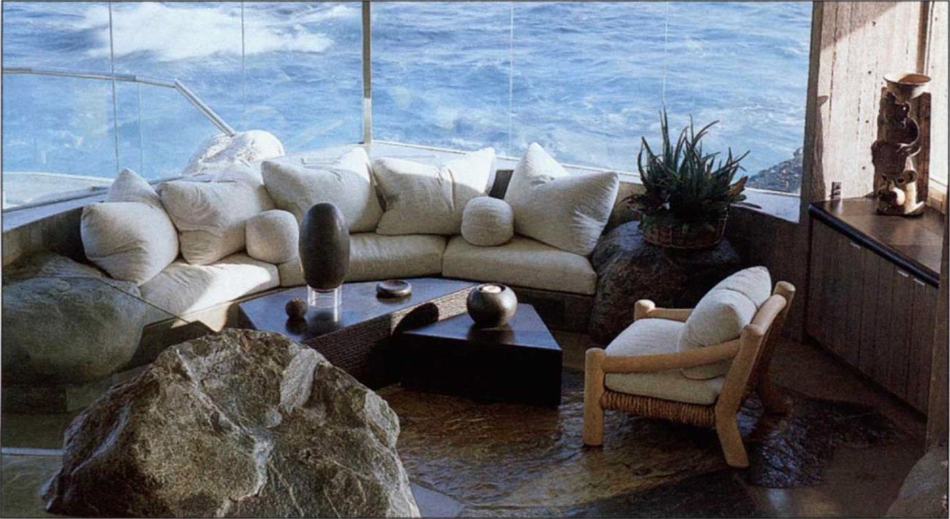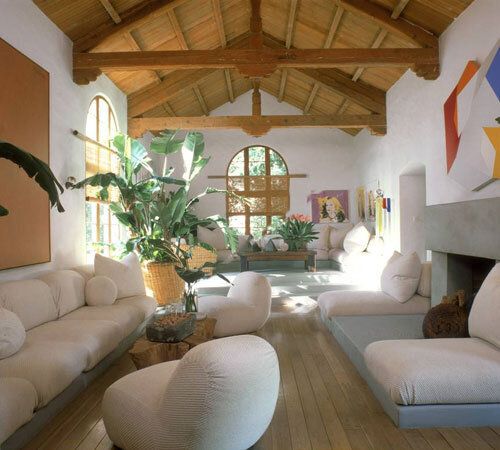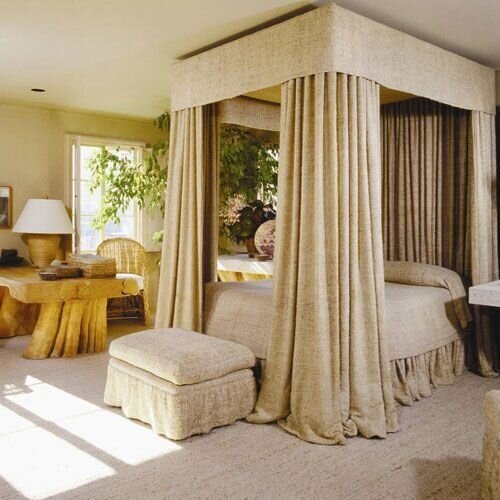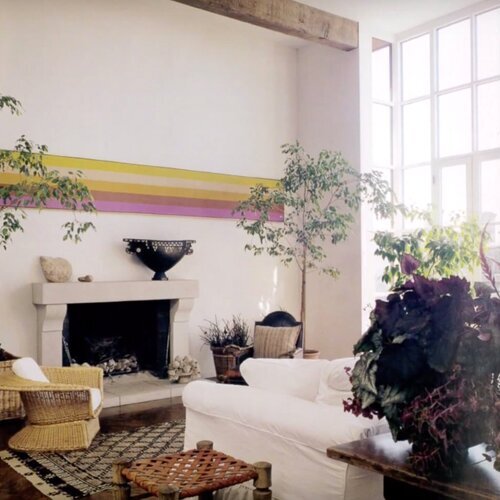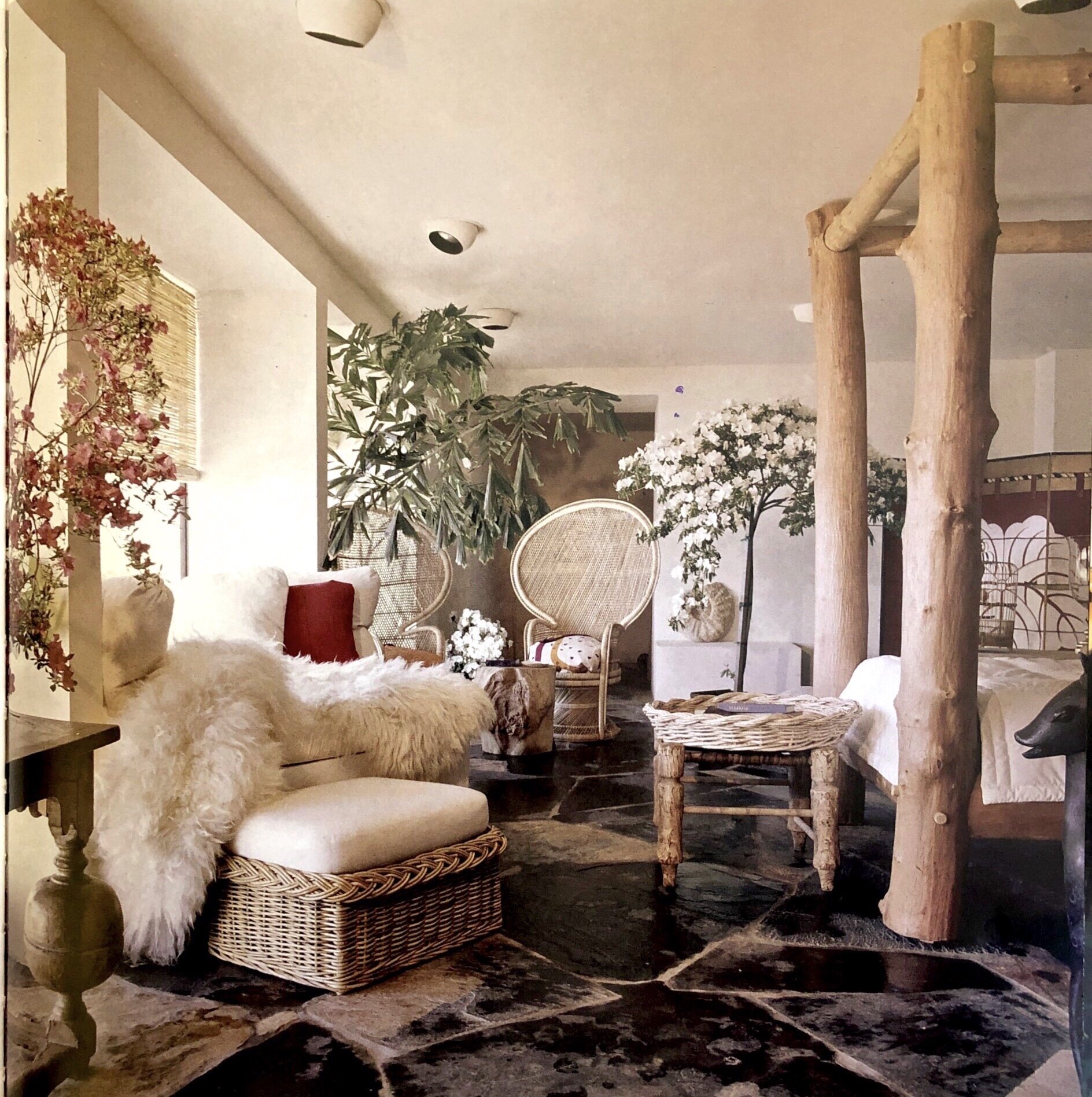MICHAEL TAYLOR
1927 - 1986
“People should have the satisfaction of developing their own personal tastes and of expressing themselves in their own homes with originality”
Early Influences: Frances Elkins, Syrie Maugham
Notable Clients: Nan Kemper, Charles Evans, Steve Martin, David Geffen
Born and raised in California, Michael Taylor put his stamp on interior design by creating the famous “California Look”. He was the pioneer and originator of many interior trends we take for granted today, such as ‘bringing the outdoors in’ by using plants and organic materials. Taylor changed interior design radically in the 70s and 80s with his casual, comfortable, uncomplicated and natural look. His rooms were filled with neutral palettes, natural light, large-scale furniture and natural materials, such as stone, wicker and slate and reflected his love for California and outdoors. He was named the “James Dean of Interior Design” by Diana Vreeland (former editor-in-chief at Vogue) and the “best decorator in the United States” by Cecil Beaton (society and fashion photographer). In his own words, “ (he) was young, (he) was in California, and it was time, (…), for a fresh approach to decorating”.
Taylor was born in Modesta, California in 1927 and raised in Santa Rosa, which influenced his later work and design concepts. One of his early inspirations was a neighbour’s house decorated by Elsie de Wolfe, and later on he was significantly influenced by Syrie Maugham’s all -white rooms and Frances Elkins’s way of experimenting with different styles. However, the most influential person on his style was probably his grandmother, who took him to antique shops, flea markets, redwood forests and beaches and taught him to appreciate the beauty of nature and antiques - two things he used consistently throughout his work.
He started his interior design career as an assistant to the designer Archibald Taylor after graduating from Rudolf Schaeffer School of Interior Design in San Francisco. Later he worked for the furniture company Bruener’s and an interior designer Robert M. Kasper. He started a design firm called Taylor & Mihailoff in 1952 after meeting with Francis Mihailoff and in 1956 he decided to open his own business. His successful career and contribution to interior design was acknowledged by the American Society of Interior Designers in 1984 with the ‘Designer of Distinction Award’.
One thing that set Taylor apart from his contemporaries was his use of light - his goal was to create rooms that were predominantly airy and light and California was the perfect place to achieve this compared to other areas with less favourable climate. According to him, white was the ideal colour for capturing light and he popularised Syrie Maghum’s “all white look”. However it’s important to note that “Michael Taylor White” was never pure white, rather a mixture of warm colours with a beige tone. In essence, his “California Look” can be summarised as “the white floor, the white wall, the perfect plant”. Taylor advocated that plants prevent “a room from feeling over-decorated, soften the light and help a room breathe and feel alive” and started the trend of placing basket-shod trees indoors. Nowadays having plants indoors is taken for granted and nearly all of us have at least one or two plants at home, whereas during his time it was something unusual and the decorating world loved it.
As the creator of the “California Look”, Taylor never hesitated to change his style when decorating a room to please a client. There were times that his “California Look” didn’t quite suit a project and that was fine - “he got excited about who his clients were. And their houses fit their personalities” reckoned Frances Bowes, a client and a good friend of Taylor. Taylor once said his approach “ (was) to combine everything suitable that gives a room the feeling of freshness, originality and a more beautiful atmosphere for living”. Sometimes it was a delicate chinoiserie antique, sometimes a two-ton boulder and more than often the combination of two. He was not afraid to mix rare antiques with his own California designs or to pair high quality items with budget-friendly goods. It was his talent to mix styles and periods and make them look like they belonged each other. Mixing different styles and period items is another thing that we take for granted today, but during his time it was something unusual and totally new.
He was a true master at creating “rustic glamour” with his quirky use of chintz, toile and other “old fashioned” elements as well as his use of organic, natural palette and rugged, natural materials like wood logs and stone. He loved using wicker furniture (it was unheard to use wicker indoors during his time), stone floors, indoor trees, and natural wood. His signature rooms were decorated with white walls, stripped floors, curtainless windows, oversized furniture and loads of plants in big, rare pots. His interiors were pure and simple but never plain and always light, airy, sophisticated and not quite finished. In his own words, "The most beautiful rooms are those that retain a feeling of not being quite finished. There is still a place for a painting on that wall, still a chair to be found that will suit that corner...meanwhile the room stays alive, young and growing...(A room) should not be 'too perfect.' Perfection in every detail usually makes a room look studied, formal, rather dull, and even forbidding."
Michael Taylor was one of the most published decorators of the 1980s (House & Garden magazine devoted eighteen covers and more than hundred articles to his work) and forever changed the American design with his West Coast style and influenced the way we live today. He started his interior design career as a rebel and continued that way - He recorded “Postmodernism has brought back the ostentatious rooms that were what (he) rebelled against originally. Now rooms are filled with fake columns and broken pediments, with no regard for function, comfort or good taste," (1985) claiming that after more than 30 years in the industry he was still a rebel.
Fun fact: Tables he designed were often so heavy that they sometimes required cranes to hoist them indoors.
References:
Pictures:
1 - Image via Jennifer Sergent
2 - Image via Architectural Digest
3 - Image via Studio L London
4 - Left image via Set Deco, right image via Studio L London
5 - Left image via Architectural Digest ,right image via Studio L London
6 - Image scanned from Inspired Design by Jennifer Boles

